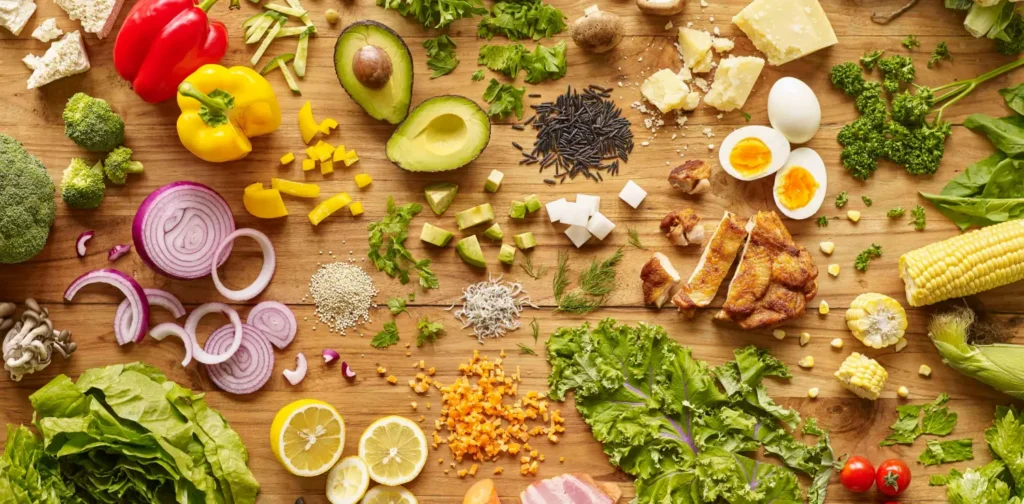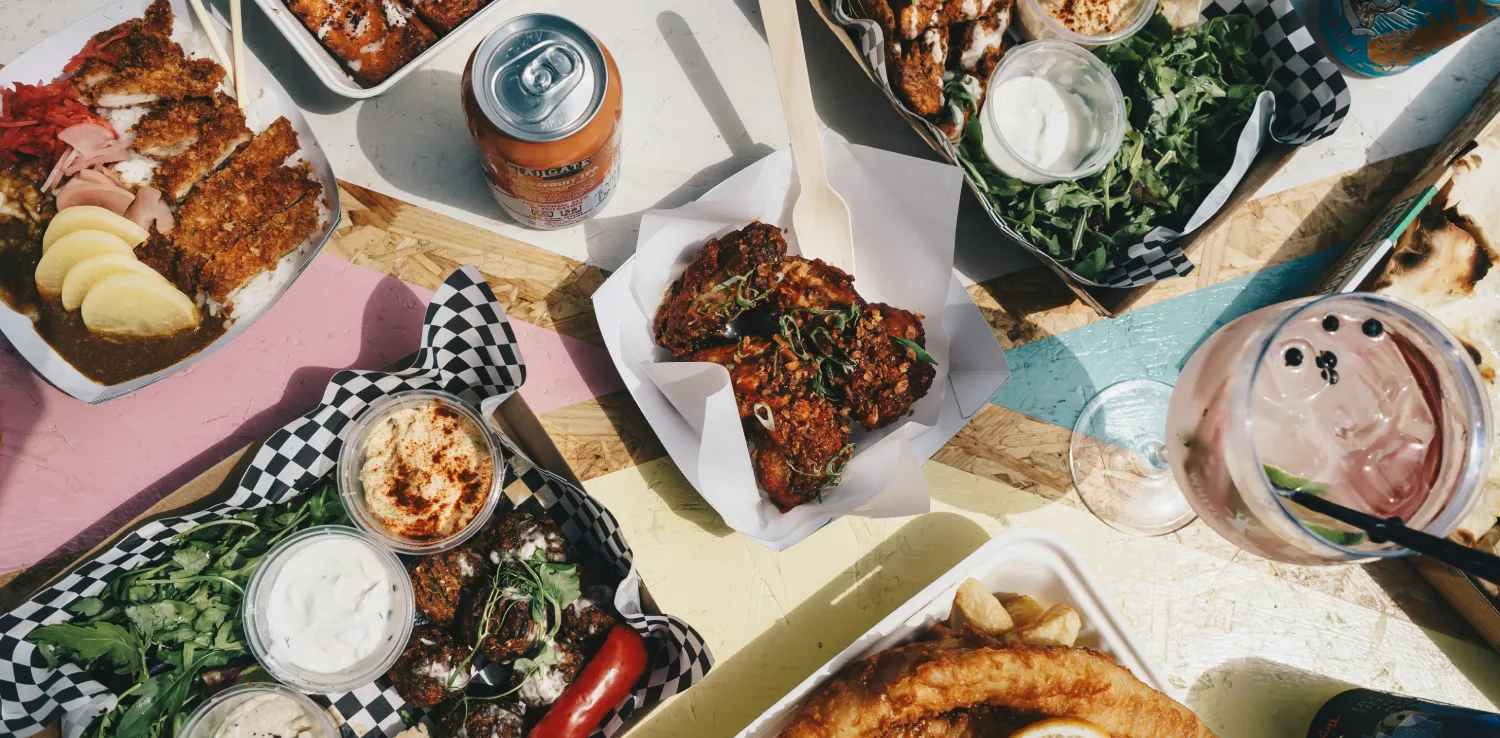Mainstreaming Real Food Consumption for a Healthier Society

Photo: Yu Hosoi on Unsplash.
How much ultra-processed food do we consume in the day? From cereals and UHT milk to chips, instant noodles, and carbonated drinks, most are often labeled as “nutritious and healthy,” leading people to consume them without considering the risks. Diets dominated by ultra-processed foods have become part of the modern lifestyle over the past few decades. However, amidst the increasing risk of diet-related diseases today, mainstreaming real food through policies becomes crucial to creating a healthier society.
The Impacts of Ultra-Processed Food
As the name suggests, ultra-processed food (UPF) refers to food that undergoes a long processing journey. The process often involves adding high amounts of sugar, salt, fat, other chemical additives, preservatives, coloring, and flavor enhancers. UPF is generally produced on a large industrial scale, although it is not uncommon for it to be made on a small scale by individuals or households. It contains little to no whole foods and is often identified with fast and instant food.
Furthermore, UPF undergoes molding, hydrogenation, frying, canning, and other processes. The Siga Index defines ultra-processed foods as foods with low nutritional value and high additives, preservatives, and artificial ingredients. A study published in the British Medical Journal stated that UPF is closely linked to 32 dangerous health impacts, including heart disease, cancer, type 2 diabetes, obesity, mental health, and premature death.
Beyond its impact on human health, UPF also negatively impacts the environment. The processing requires a lot of energy and a long supply chain, resulting in large greenhouse gas emissions. The most notable environmental impact of a UPF-rich diet comes from the post-agricultural stage, particularly the final product manufacturing and packaging processes. Moreover, UPF packaging, especially the plastic ones, often ends up in seas and rivers as unmanaged waste.
Therefore, besides being the healthier choice, reducing the consumption of ultra-processed foods can contribute to environmental sustainability. In this case, real food can be a solution for a healthier and more sustainable diet.

Real Food and the Privilege of Enjoying It
Essentially, real food refers to foods that have minimum to no processing. These foods are derived from natural resources, such as plants and animals. Some examples of real food we might consume daily are vegetables, fruits, meat, nuts, seeds, seafood, and more. More concrete examples include grilled fish, boiled cassava, fried chicken, roasted sweet potatoes, stir-fried spinach, and fruit salads.
Consuming real food has several benefits. This type of food usually has more nutrition, less sugar and salt, and high fiber. It can also reduce health risks, be better for mental health, and be more environmentally friendly. Some types of real food, such as food derived from herbal plants and certain animal organs, can also act as medicine or prevent disease.
Unfortunately, even though real food undergoes minimal to no processing, people often face difficulties obtaining it compared to ultra-processed food. In fact, consuming real food can be considered a privilege only attainable to certain people rather than a choice anyone can make at any time. For example, poor households, especially in urban areas, often only have UPF, such as instant noodles or canned fish, instead of local vegetables or fruit.
Furthermore, many places, including schools, sell UPF as snacks. It has become common for students to snack on grilled sausages, iced boba, instant noodle crackers, and so on. Youth and adults are no different. The word “snacks” is often synonymous with instant, fast food with low nutrition.
Lack of knowledge about nutrition, changes in urban lifestyle and industrialization, perceptions about the social status of consuming processed food, and dangerous and irresponsible product marketing are some factors that make real food less popular than ultra-processed food.
Mainstreaming Real Food Through Policy
Consuming real food means returning to our eating patterns before ultra-processed food was invented. Mainstreaming real food is crucial to support a healthier society and can be integrated with the efforts to eradicate hunger per Sustainable Development Goal 2.
In this case, meaningful intervention from the government is required through establishing and strengthening food-related policies. Several strategic and important steps to support the required policies include:
- Boost education and campaigns related to nutrition to increase public awareness and knowledge regarding the health benefits of consuming real food.
- Implement regulations that promote and prioritize selling real food in public places such as schools and culinary centers. This can be done by encouraging more real food choices and innovation while limiting UPF sales.
- Collaborate between the government and the food and retail industries to increase the availability of real food. For example, facilitate partnership programs between supermarkets or minimarkets and local farmers to ensure a supply of fresh and quality real food.
- Improve accessibility to real food by developing infrastructure that supports the distribution and marketing of fresh food at affordable prices. For example, building a clean and neat real food market can help local farmers sell their products directly to consumers.
- Develop subsidy or nutritional assistance programs that support communities, especially underprivileged ones, in buying real food. Additionally, developing incentive programs for farmers or real food producers can help increase the production and availability of real food in local markets.
- Ensure that real food on the market meets food quality and safety standards, including monitoring the use of pesticides and other chemicals, and that real food production uses safe, environmentally friendly, and sustainable practices.
Apart from the government, all relevant stakeholders must also participate in mainstreaming real food. For example, the food and retail industry can implement efforts to reduce the promotion and sale of unhealthy UPF and increase the availability of fresh, high-quality real food. In this case, collaboration with local farmers to ensure the supply of real food is essential.
Furthermore, educational institutions, civil society organizations, and the media can also play a role in their respective capacities. Finally, our role as individual consumers must not be underestimated. Increasing our knowledge about healthy eating patterns and choosing to include more real food in our diets can directly influence market demand and encourage the industry to provide more real food options.
Translator: Kresentia Madina
The original version of this article is published in Indonesian at Green Network Asia – Indonesia.

Join Green Network Asia Membership
If you find this content useful, support Green Network Asia’s movement to create positive impact for people and the planet through public education and multi-stakeholder advocacy on sustainability-related issues and sustainable development. Get exclusive benefits for personal and professional development.
Become a Member Now

 Indigenous Knowledge and Art as Integral Instruments for Disaster Risk Reduction
Indigenous Knowledge and Art as Integral Instruments for Disaster Risk Reduction  Strengthening Societal Resilience in the Age of Disruptions
Strengthening Societal Resilience in the Age of Disruptions  Building Strategic Approach to Support Urban Health for All
Building Strategic Approach to Support Urban Health for All  Understanding and Addressing Multiple Dimensions of Child Deprivation
Understanding and Addressing Multiple Dimensions of Child Deprivation  Building Heat Resilience Amidst Rising Risk in the Asia-Pacific
Building Heat Resilience Amidst Rising Risk in the Asia-Pacific  Sounds Right and Recognizing Nature as an Artist for Biodiversity Conservation
Sounds Right and Recognizing Nature as an Artist for Biodiversity Conservation